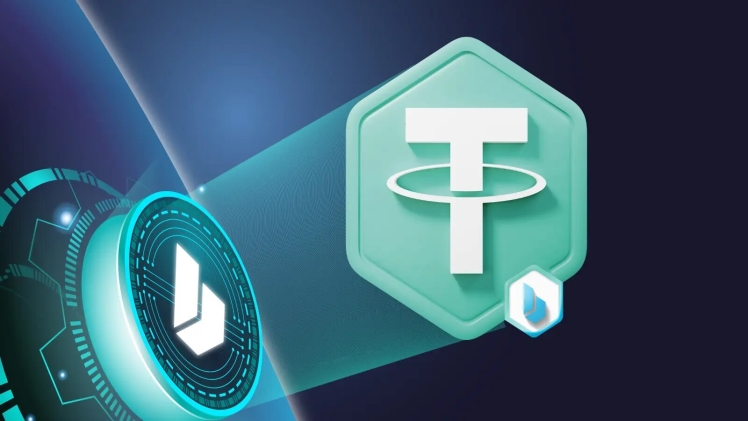In the dynamic world of cryptocurrency, USDT (Tether) stands out as a stablecoin that bridges the traditional financial system with the burgeoning world of digital currencies. Specifically, the USDT ERC20 token, based on Ethereum’s blockchain, has garnered significant attention for its stability and versatility. This blog post aims to provide a thorough understanding of USDT ERC20, exploring its creation, functionalities, advantages, and its integral role in the digital economy.
1. What is USDT ERC20?
Background of USDT
USDT, or Tether, is a type of cryptocurrency known as a stablecoin. It’s designed to maintain a constant value, primarily pegged to fiat currencies like the US Dollar, the Euro, and the Yen. This stability contrasts with the volatility typically associated with cryptocurrencies like Bitcoin and Ethereum.
ERC20 Standard
The ERC20 standard is pivotal in the Ethereum blockchain ecosystem. It provides a set of rules and functions that define how tokens, including USDT, behave on the Ethereum network. This standardization ensures compatibility between various Ethereum-based tokens and decentralized applications (DApps).
USDT ERC20 Token
The USDT ERC20 token is a Tether variant issued on the Ethereum blockchain, leveraging the ERC20 standard’s robust and flexible framework. This integration combines Tether’s stable value with Ethereum’s advanced smart contract capabilities.
2. Creation and Evolution of USDT ERC20
The Genesis of Tether
- Early Days: Tether was initially launched on the Bitcoin blockchain through the Omni Layer protocol. This phase marked Tether’s entry into the market as a bridge between fiat and cryptocurrencies.
- The Shift to Ethereum: Recognizing Ethereum’s growing prominence and its smart contract functionalities, Tether expanded to the Ethereum blockchain, issuing USDT as an ERC20 token.
Advancements in Technology
- Smart Contract Integration: The ERC20 standard allowed for the creation of sophisticated smart contracts, making USDT transactions more efficient and secure on the Ethereum network.
- Scalability and Speed: Ethereum’s infrastructure offered faster transaction times and improved scalability compared to the Omni Layer on Bitcoin.
3. How USDT ERC20 Works
Token Creation and Redemption
- Issuance: USDT ERC20 tokens are created when an equivalent amount of fiat currency is deposited into Tether’s reserves.
- Redemption: Users can redeem USDT for fiat currency, ensuring the peg to the underlying asset.
Transactions on Ethereum
- Sending and Receiving: USDT ERC20 transactions occur on the Ethereum blockchain, leveraging Ethereum’s speed and security.
- Gas Fees: Transactions require Ethereum’s native token, Ether, to pay for gas fees, a consideration for users when transacting with USDT ERC20.
4. The Advantages of USDT ERC20
Stability and Security
- Stable Value: USDT’s peg to fiat currencies provides a haven against the volatility of other cryptocurrencies.
- Enhanced Security: Ethereum’s robust blockchain technology offers additional security layers for USDT transactions.
Integration and Utility
- Widespread Acceptance: USDT ERC20’s compatibility with the Ethereum ecosystem has led to widespread acceptance across exchanges and DApps.
- Use Cases: From trading to remittances and payments, USDT ERC20’s stability and Ethereum integration make it a versatile tool in the crypto economy.
5. Challenges and Criticisms
Transparency Concerns
- Reserve Audits: Questions have been raised about the sufficiency of Tether’s fiat reserves, prompting calls for more transparency and regular audits.
Regulatory Scrutiny
- Legal and Regulatory Hurdles: As with many cryptocurrencies, USDT faces regulatory challenges that could impact its operation and acceptance.
6. The Future of USDT ERC20
Innovation and Adaptation
- Layer 2 Solutions: To address scalability and cost, USDT may leverage Ethereum’s layer 2 solutions, enhancing transaction efficiency.
- Regulatory Compliance: Navigating the evolving regulatory landscape will be crucial for Tether’s continued success.
Integration with DeFi and Beyond
- DeFi Ecosystem: USDT ERC20’s integration with Ethereum makes it a key player in the burgeoning DeFi (Decentralized Finance) sector.
- Global Impact: As digital currencies gain acceptance, USDT ERC20 could play a pivotal role in global finance, remittances, and digital payments.
FAQs
Q: How does USDT ERC20 maintain its peg to fiat currencies?
A: USDT ERC20 maintains its peg through Tether’s reserves of fiat currency, equivalent to the number of USDT tokens in circulation.
Q: Can USDT ERC20 be used on other blockchains?
A: USDT is issued on several blockchains, including Ethereum (as ERC20), Tron, and others. Each variant operates within its respective blockchain ecosystem.
Q: Are there risks involved in using USDT ERC20?
A: While USDT provides stability, users should be aware of potential risks, including regulatory changes and the need for trust in Tether’s reserve holdings.
Q: How does USDT ERC20 differ from other stablecoins?
A: USDT ERC20’s main distinction is its wide acceptance and integration with the Ethereum blockchain, making it a preferred choice in many crypto transactions and DeFi applications.
Conclusion
USDT ERC20 represents a fusion of stability and innovation in the cryptocurrency landscape. Its role in providing a stable medium of exchange on the volatile Ethereum blockchain has been instrumental in advancing the crypto economy. As the digital economy evolves, USDT ERC20’s ability to adapt to new challenges and opportunities will be crucial in shaping its future impact.

